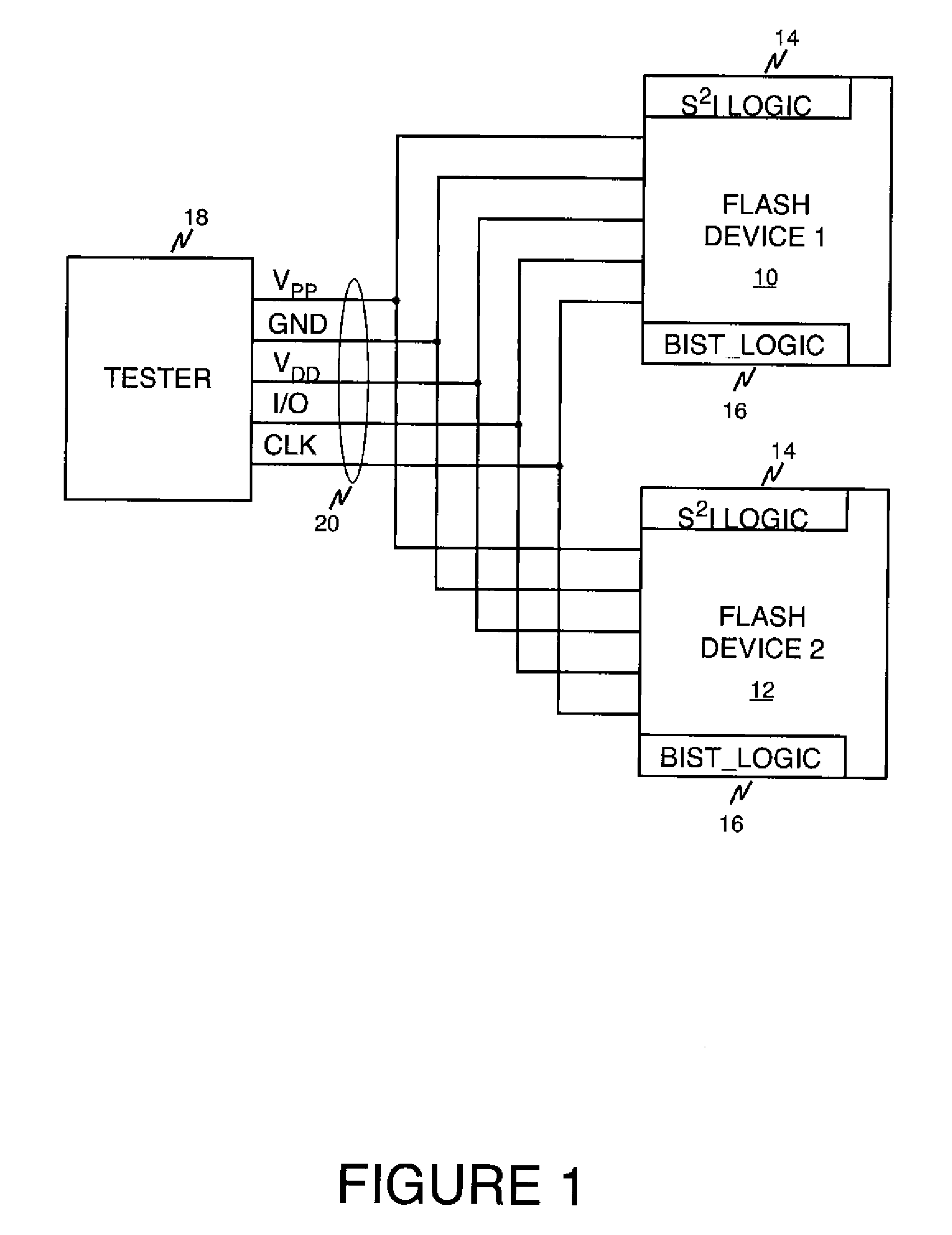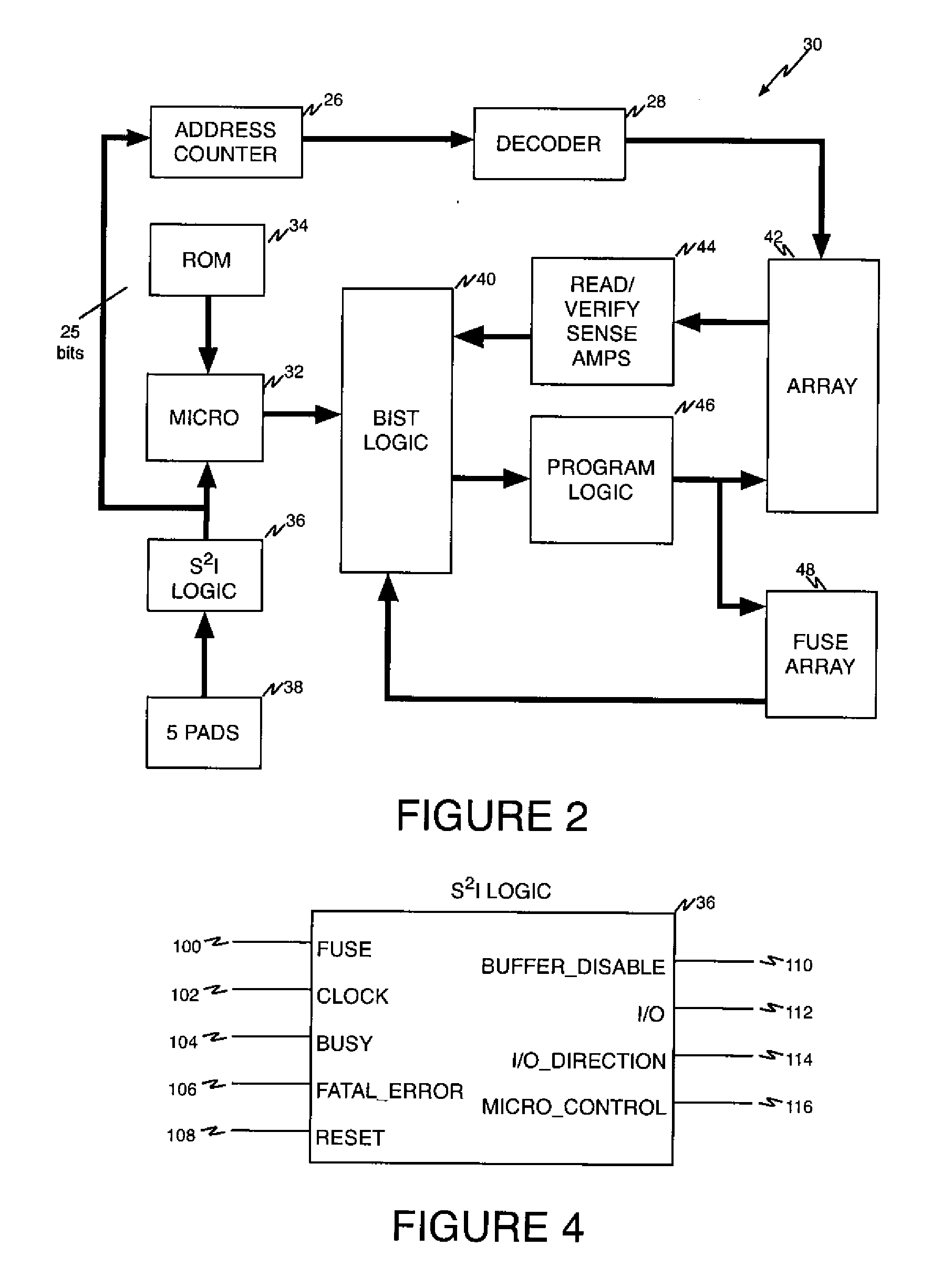Embedded architecture with serial interface for testing flash memories
- Summary
- Abstract
- Description
- Claims
- Application Information
AI Technical Summary
Benefits of technology
Problems solved by technology
Method used
Image
Examples
Embodiment Construction
[0020]Persons of ordinary skill in the art will realize that the following description of the present invention is illustrative only and not in any way limiting. Other embodiments of the invention will readily suggest themselves to such skilled persons.
[0021]The architecture of the present invention can be extended to chips with N redundancy resources made of K bits, where N is the number of redundancy resources available on the device and K is the number of bits needed to completely describe a single resource.
[0022]Referring now to FIG. 1, a block diagram shows two flash memory devices 10 and 12 configured according to the principles of the present invention and including a S2I_logic block 14 and a BIST logic block 16. Flash memory devices 10 and 12 are coupled to a tester 18 via a 5-wire bus 20. The 5-wire bus 20 includes VPP, a potential that may be used to program the flash memory devices 10 and 12, VDD to supply the standard power for the flash memory devices 10 and 12, GND, to...
PUM
 Login to View More
Login to View More Abstract
Description
Claims
Application Information
 Login to View More
Login to View More - R&D
- Intellectual Property
- Life Sciences
- Materials
- Tech Scout
- Unparalleled Data Quality
- Higher Quality Content
- 60% Fewer Hallucinations
Browse by: Latest US Patents, China's latest patents, Technical Efficacy Thesaurus, Application Domain, Technology Topic, Popular Technical Reports.
© 2025 PatSnap. All rights reserved.Legal|Privacy policy|Modern Slavery Act Transparency Statement|Sitemap|About US| Contact US: help@patsnap.com



